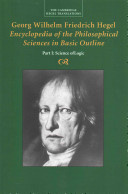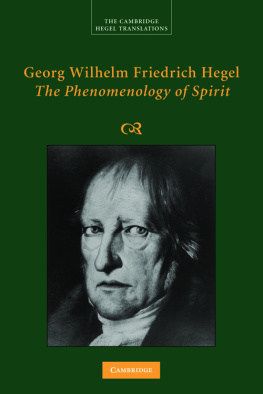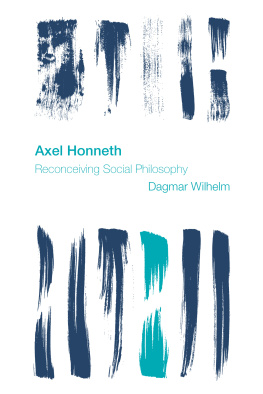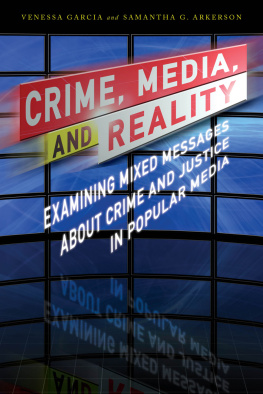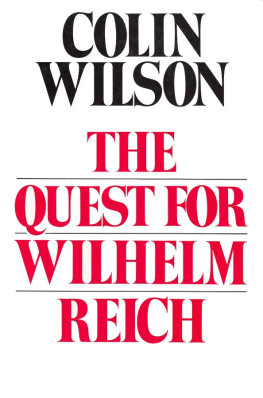The Social
Reality of
Crime
Law & Society Series
Ancient Law
Henry Sumner Maine
with an introduction by Dante J. Scala
An Introduction to the Sociology of Law
Nicholas S. Timascheff
with an introduction by A. Javier Trevino
The Common Law
Oliver Wendell Holmes
with a new introduction by Tim Griffin
Critique of the Legal Order
Richard Quinney
with a new introduction by Randall G. Sheldon
Fundamental Principles of the Sociology of Law
Eugen Ehrlich
with a new introduction by Klaus A. Ziegert
Penal Philosophy
Gabriel Tarde
with a new introduction by Piers Beirne
Punishment and Social Structure
Georg Rusche and Otto Kirchheimer
with a new introduction by Dario Melossi
Sociology of Law
Georges Gurvitch with
a new introduction by Alan Hunt
The General Theory of Law and Marxism
Evgeny Bronislavovich Pashukanis
with a new introduction by Dragan Milovanovic
The Social Reality of Crime
Richard Quinney
with a new introduction by A. Javier Trevio
The Social
Reality of
Crime
with a new introduction by
A. Javier Trevio
Richard Quinney
Originally published in 1970 by Little, Brown & Company.
Published 2001 by Transaction Publishers Published 2017
Published 2017 by Routledge
2 Park Square, Milton Park, Abingdon, Oxon OX14 4RN
711 Third Avenue, New York, NY 10017, USA
Routledge is an imprint of the Taylor & Francis Group, an informa business
New material this edition copyright 2001 by Taylor & Francis.
All rights reserved. No part of this book may be reprinted or reproduced or utilised in any form or by any electronic, mechanical, or other means, now known or hereafter invented, including photocopying and recording, or in any information storage or retrieval system, without permission in writing from the publishers.
Notice:
Product or corporate names may be trademarks or registered trademarks, and are used only for identification and explanation without intent to infringe.
Library of Congress Catalog Number: 00-050797
Library of Congress Cataloging-in-Publication Data
Quinney, Richard.
The social reality of crime / Richard Quinney ; with a new introduction
by A. Javier Trevino.
p. cm.
Includes bbibliographical references and index.
ISBN 0-7658-0678-9 (paper: alk. paper)
1. Criminology. 2. Criminal anthropology. I. Title.
HV6035 .Q52000 00-050797
364dc21
ISBN 13: 978-0-7658-0678-9 (pbk)
Contents
ONE
The Social Reality of Crime
TWO
Criminal Law in Politically Organized Society
THREE
Interests in the Formulation of Criminal Laws
FOUR
Enforcement of Criminal Law
FIVE
Administration of Criminal Justice
SIX
Penal and Correctional Administration
4 DEVELOPMENT OF BEHAVIOR PATTERNS IN
RELATION TO CRIMINAL DEFINITIONS
SEVEN
Societal Organization and the Structuring of Behavior Patterns
EIGHT
Action Patterns of the Criminally Defined
NINE
Public Conceptions of Crime
TEN
The Politics of Reality
Introduction
to the
Transaction Edition
I
Three decades after it was first published, Richard Quinneys The Social Reality of Crime remains an eloquent and important statement on crime, law, and justice. At the time of its appearance in 1970, the theory of the social reality of crimeas a critical reinterpretation of criminologynot only liberated the field from being mainly a recitation of the practices of the police, courts, and corrections, it also, and more importantly, represented a marked departure from the traditional analysis of crime that viewed criminal behavior as pathological in nature. Additionally, Quinney renounced the conventional conceptualization of law as an abstract, autonomous body of rules and instead reintroduced into sociology Roscoe Pounds notion of the law in actionthat is to say, the law as a dynamic force that is continually being created and interpreted. Quinneys theory not only served to advance criminological and legal thought, it also inspired scores of students of crime, law, and society who had become disenchanted with the customary analyses, to reorient their perceptions of criminal justice.
Upon its publication, The Social Reality of Crime received wide acclaim and gave an entire generation of researchers the courage and legitimacy to seriously question definitions of crime and labels of criminality. The books popularity quickly turned Quinney into a criminologist with an international reputation. Excerpts from the books first chapter, which is devoted to the theory of the social reality of crime, are now routinely reprinted in anthologies on criminology and deviant behavior. The theory itself is discussed in most criminology textbooks.
There is no doubt that Richard Quinney has helped shape the course of criminology over the last thirty years. He (along with William J. Chambliss and Austin T. Turk) has contributed greatly to the further development of the conflict approach, placing it at the forefront of criminological theory. Quinney is not only the most prolific of the criminological conflict theoristshaving produced over sixty-five articles and some fifteen books including, Critique of Legal Order: Crime Control in Capitalist Society (1974), Providence: The Reconstruction of Social and Moral Order (1980), Marxism and Law (1982), and Criminology as Peacemaking (1991)he is also the most controversial. The controversy stems in part from his having shifted his paradigmatic orientation several times during his long and distinguished career.
Quinneys mark on the field is most apparent in the number of times he is referenced in criminology textbooks. He is, to be sure, the most widely cited of todays criminologists, ranking third in total number of references, exceeded only by the late Edwin H. Sutherland and the late Donald R. Cressey, ranked first and second respectively. Quinneys significance to criminology is perhaps best demonstrated in a 1982 article written by R.E. Hilbert and C.W. Wright for the journal Deviant Behavior, comparing Quinneys explanation of the inevitability of crime with that of the great French sociologist, Emile Durkheim.
In 1984, the American Society of Criminology (ASC) awarded Quinney the prestigious Edwin H. Sutherland Award for his contributions to criminological theory. In 1995, he was made a fellow of the ASC and, in 1998, was given the Major Achievement Award by the ASCs Critical Criminology Division. He is the only criminologist who has published two autobiographies, Journey to a Far Place: Autobiographical Reflections (1991) and For the Time Being: Ethnography of Everyday Life (1998).
II
Quinney first became interested in the American legal system while a graduate student at the University of Wisconsin, Madi son (from 1957 to 1962) preparing for his doctoral examination in criminology. At that time, he made three observations about law that would guide his thinking for the next several years: (1) that sociologists had not paid appropriate attention to the formulation of law in their studies of crime, (2) that law-breaking is related in some way to law-making, and (3) that law is not a system based on consensus, but tends to represent the interests of the powerful in society.





